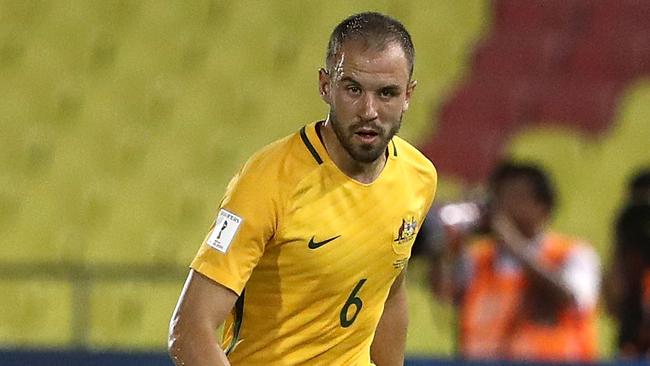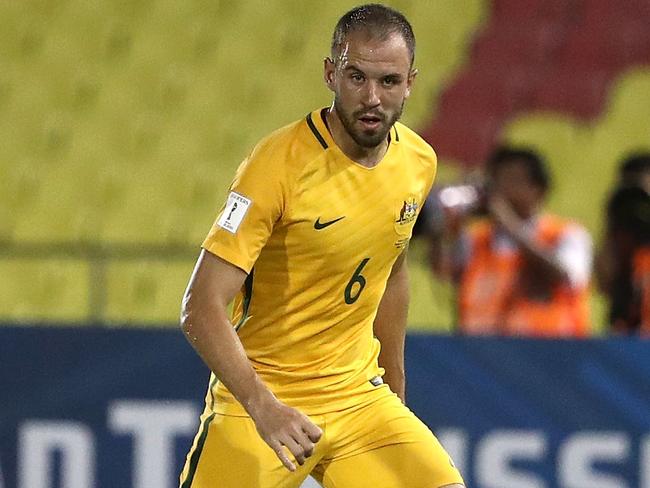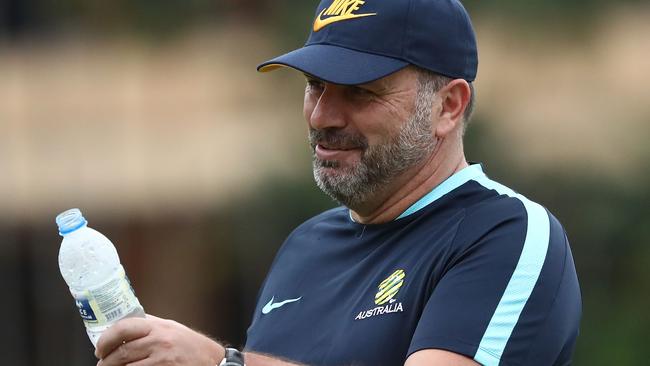Socceroos coach Ange Postecoglou forced by varying circumstances to use 59 players in his 46 games in charge
FOUR years of trial, evolution and misfortune have culminated in a diverse Socceroos squad that decides Australia’s 2018 World Cup fate.

Football
Don't miss out on the headlines from Football. Followed categories will be added to My News.
FOUR years of trial, evolution and misfortune have culminated in a diverse Socceroos squad that decides Australia’s 2018 World Cup fate.
Coach Ange Postecoglou has set a criteria which, without the luxury of signing and releasing players and Australia’s playing stocks at an all-time low, is fluid.
Matt Jurman became the 59th Socceroo used in Postecoglou’s 46 games and while seven survivors remain from his Costa Rica debut, the turnover of defenders depicts its own tale.
Lucas Neill and Rhys Williams opened the batting, the latter only recently recovering from two torn achilles’.
SOCCEROOS: Ange promises high tempo at home
Next, former Young Socceroos captain Curtis Good starred in his one and only game, pairing up with Matthew Spiranovic, with a hip flexor injury hampering him for years.
Trent Sainsbury was robbed of a 2014 World Cup spot after his knee shattered while colliding with a sprinkler — in a game — with Alex Wilkinson stepping up.

Injury-prone Luke DeVere’s only game was outstanding, against Germany no less in March 2015.
Postecoglou said red-tape blocked a call-up for composed youngster Ruon Tongyik last March, but the vote of confidence zapped him with the Socceroos curse. He’s played just four A-League games since.
Call ups aimed at encouraging youth have proved fruitless further forward, with midfielders Danny De Silva, Stefan Mauk and Riley McGree playing a relatively rarely after maiden camps.
The lack of X-factor players is telling, and tragedy robbed Australia and perhaps the world, of a potential star in April 2014 when Dylan Tombides — our most talented teen since Mark Viduka and Harry Kewell — lost his battle with testicular cancer.
His confidence, determination and standing at West Ham, where he was on the verge of an English Premier League debut aged 17, meant he was odds-on to carry his world-class Joeys displays at the 2011 FIFA U17 World Cup on to the senior stage.
Incidentally, Milos Degenek is the only player who’s won a senior cap from that squad, supposedly one of our strongest youth teams of the new era.
Thursday’s debut of Korea-based Jurman, age 27, and recall of Israel-based Nikita Rukavytsya, 30, for the Syria games were not from the Postecoglou playbook, but they underline the status quo.
Blessed with quality, Frank Farina blooded Vince Grella and Mark Bresciano (Italy) and Jason Culina (Holland) when they were bona fide first-team players in strong leagues.
Terry Venables had club stars John Aloisi (Portsmouth after a stint with Cremonese in Serie A), Josip Skoko (Hajduk Split) and Kevin Muscat (Wolves) on the fringes for the Iran playoffs.

The production line had slowed when by the time Pim Verbeek and Holger Osieck came in, but the golden generation backbone remained.
Postecoglou moved on a host of experienced players to blood kids.
Some believe they would’ve been better served earning their stripes, yet one wonders what state the team would be in now if not for the mass overhaul.
Whether misfortune, a physical issue — some youth experts believe the focus on technical training, almost to the exclusion of physical work has left players more susceptible to injury — or a lack of professional opportunities, which the players’ union advocates, it’s slim selection pickings. That won’t change in the foreseeable future, probably until the A-League expands and/or a second division is added.
Hence qualifying for Russia 2018 should be deemed a feat, not a right.
Originally published as Socceroos coach Ange Postecoglou forced by varying circumstances to use 59 players in his 46 games in charge
